So ya wanna build saddle trees? part three
We are no longer building saddle trees, but we have two videos about how Western saddles fit horses available on our westernsaddlefit.com website.
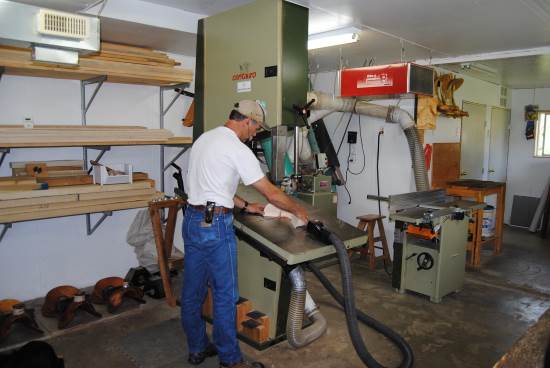
For someone who is serious about wanting to build saddle trees and who has the personal attributes necessary to be a tree maker, a big hurdle is often acquiring the equipment. We often tell people that this isn’t something you can do in your basement in the winter. It needs more space than that.
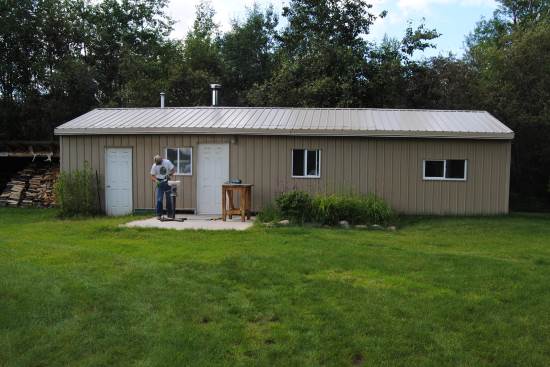
The first thing you need is a shop to work in. The dust and the noise preclude this from being something you can do in a building you use for much else. If you are a saddle maker and want to build your own trees, you need at least a door between the saddle shop and the tree shop. Sawdust and leather don’t mix well… Where you live, what the weather is like, how close the neighbours are – all these things determine the size and type of shop you build. Ours is 16 x 42. Larger wouldn’t hurt at all, but the costs of building where we live and heating it for at least 6 months a year mean that a really big shop doesn’t suit our environment well. Though if it was bigger, maybe Rod wouldn’t get in my way as much…
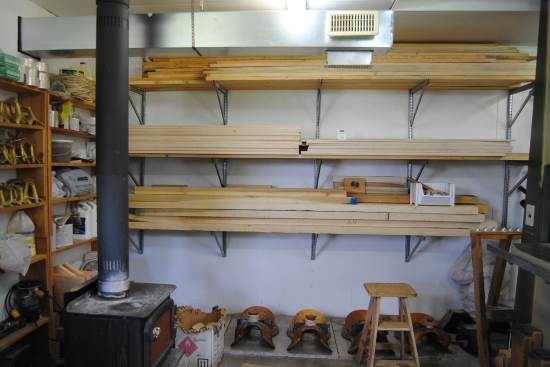
You also need room for wood storage. Whether this is in the shop (ideal)...
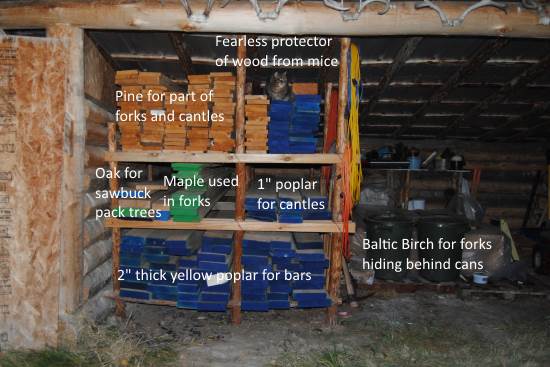
or outside the shop, you need someplace under cover to store as much wood as you are going to have on hand at any one time. Due to distance and shipping costs, we purchase a year’s worth of wood at one time. For the numbers we build, this shed plus the inside storage for wood we want close at hand is enough.
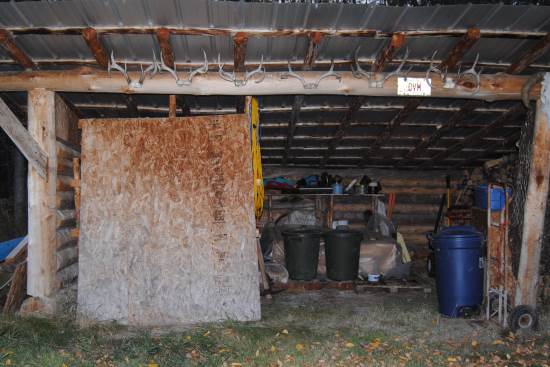
And while it is “outside”, it is very well protected from any kinds of moisture other than just humidity, which in Alberta is rarely a problem…
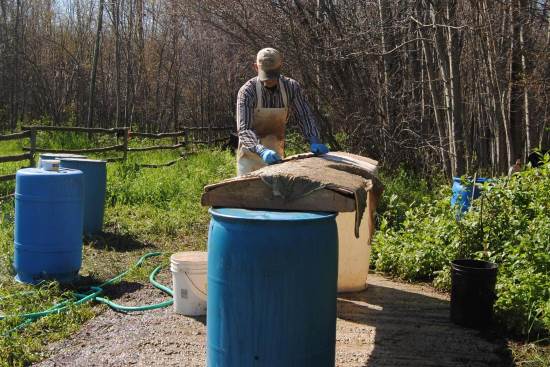
Unless you plan to purchase your rawhide, which is more difficult and expensive now that Tejas isn’t selling rawhide anymore, you need some place to make your own hides. An outside set up is ideal, so long as you don’t have neighbours too close. (Although, we had good neighbours who didn't object when Rod made rawhide for two summers just a couple blocks off main street in Weyburn, Saskatchewan. It still amazes me...) Getting fresh air while you are making hides is really a good idea. If you live in a warmer climate than we do, this is probably all you will need.
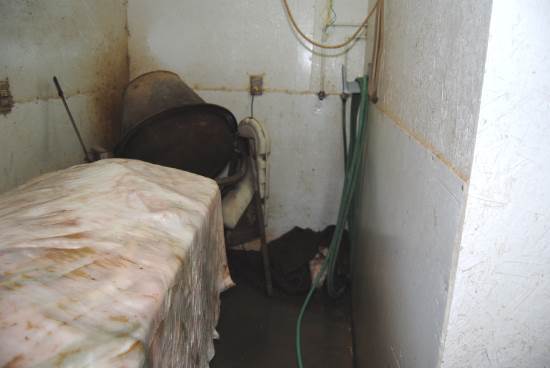
But if you live in a land that is below freezing for months on end, you need a place to make hide that doesn’t freeze. Thus, our 10 x 16 "minus-the-furnace-room-and-freezer-space” rawhide room with protected walls and a drain in the floor. Something else to put into your shop plans…
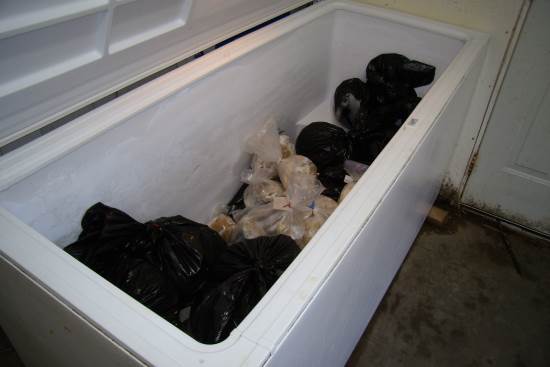
You need someplace to make and/or store rawhide. We have a 22 foot freezer where we keep hides already cut up into the number and size of pieces for a tree. Full, this will last us three to four months. If you plan to purchase all your hide, a lot more freezer space may be desirable for economic reasons. We know of one tree maker who now has a walk in freezer so he can purchase rawhide in bulk to decrease the price to a more reasonable level.
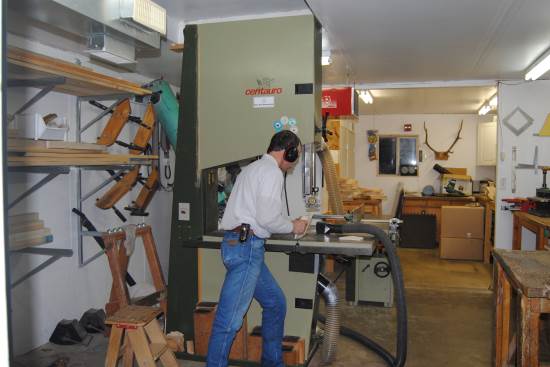
Then, the wood working equipment. Yes, every tree maker we know who builds any number of trees has a Big Band Saw. It isn’t so much the depth of the throat that you need for the length of wood, though that comes in handy.
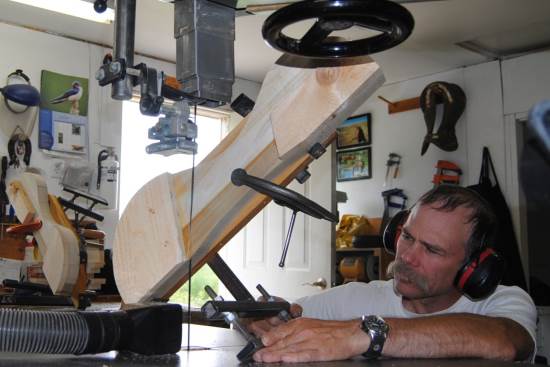
It is the height that you need when using the jigs to cut the proper angles on the bars. We know at least one maker who builds for his own saddles who has only a 24” band saw, but he says larger would be better. Ours is 31”, since that was what was available when we were starting up. It is nice to have that much room.
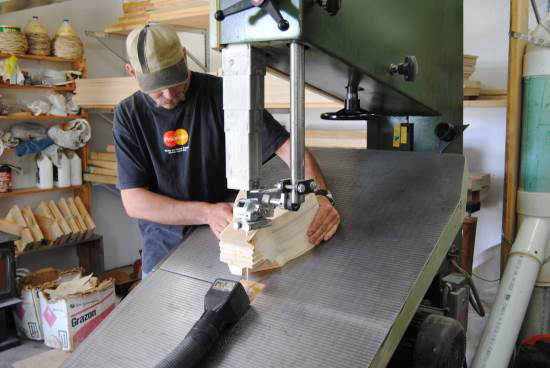
Something else to consider with a band saw is how far the table will tilt. Ours only goes to about 35 degrees. Having a table that would tilt to 45 degrees would be much handier. We might be able to quit using some jigs and just tilt the band saw if our table tilted to a higher angle, but ya do what’cha gotta do…
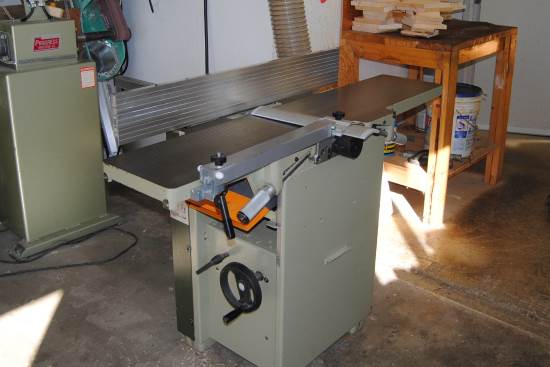
You need something to make the wood smooth and thickness it. If you are in the US (or Rod), you call it a jointer/planer. If you are in Europe (or Denise) you call it a planer/thicknesser. Either way, you have to have one – or two. Ideally, if you have the room, we would recommend separate machines. And you need them at least 12” wide. It is easier and cheaper now to get wider machines without excessively long bed lengths, but that doesn’t mean easy or cheap. In fact, if you are planning to be a tree maker for others, you probably want to go with good quality industrial machines. You’ll be using them…
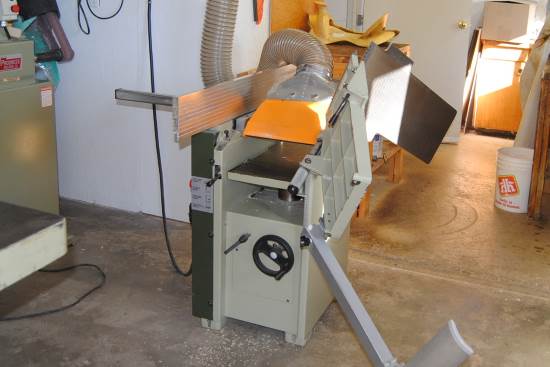
We have a combination machine which has worked well for us over the past 18 years. You flip both tables over to do the planing/thicknessing. However, it would be easier as far as set up goes to not be changing from one to the other all the time. Thus the two machine recommendation…
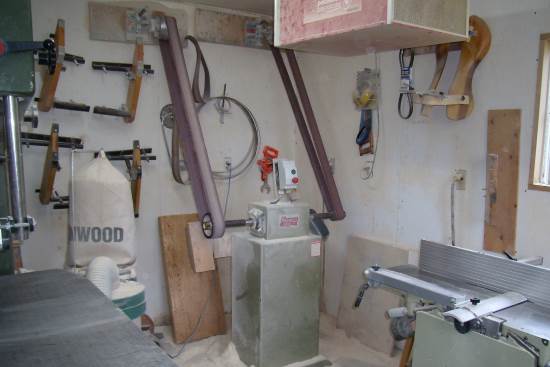
You need some sort of sander which will be able to handle a fair amount of use. We have this one with the long belts so they don’t fill up with dust too quickly. One wheel is 6” diameter while the other is 3” diameter. Rod uses the 6” for a lot of his shaping but the 3” for the sharper curves, such as the gullets on forks and cantles and around a wood post horn. Having both sizes is pretty much necessary. (This picture was obviously taken before the next piece of equipment was in use!)
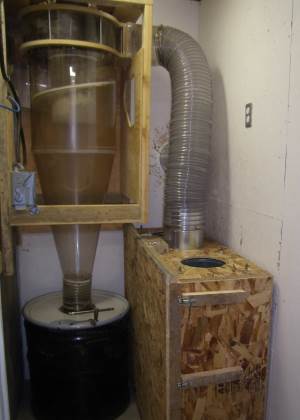
Something else that is vital is a good dust collection system. We strongly recommend a good cyclone system. In fact, we would say it is pretty much imperative if you want to be long lived as a tree maker – or maybe just even long lived… We use the Clear Vue. We didn’t start out with this, but it was worth every penny we had to put in to expand the shop to make room for it and all the work to put up the 6” piping needed to adequately collect dust.
If noise and dust and neighbours aren’t a concern, it is ideal to vent the system outside. We do this all summer. But when you have a system that can totally replace the air in your shop every three minutes, you can’t heat (or cool if you live in a really hot place) air that fast, and so filtering the air and returning it directly to the shop is necessary.
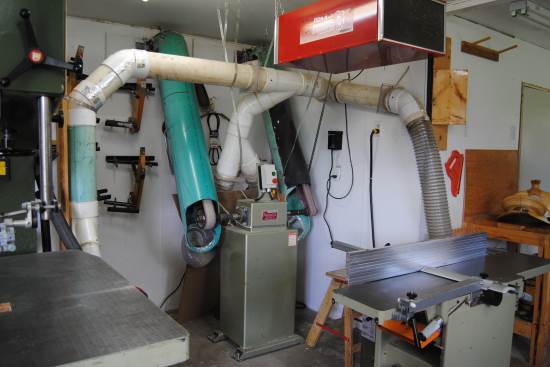
The hard part about dust collection is figuring out how to contain the dust at the source, how to build hoods or collection devices that actually get the dust and chips from the equipment before it gets blown out into the room. Those machines can fling the microscopic dust (the stuff that gets down into your lungs and causes major problems) a long way. You need the really strong air flow from a large motor and impeller in your dust collection system to suck that dust away before it gets out into the room. (With the enclosed collection we now have on the sander, it is the cleanest piece of equipment we use.)
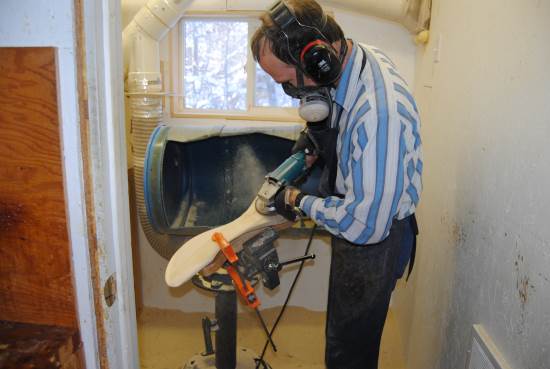
But when you can’t contain the dust… Grinding with the side grinder is a big part of how we build trees. Rod works outside whenever he can, but when it rains (not that common, especially this summer) or is too cold (more months of the year than we would wish) he has to work inside. So we built a small room we designate as “the dirty room”. (It is only 6 x 6, so it is very difficult to get a picture in there!) Besides the blue “patent pending dust collector unit" you see in the background...
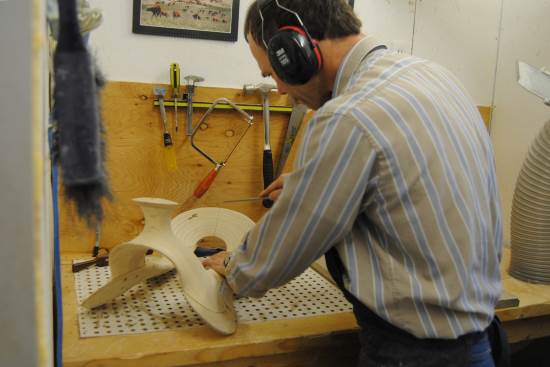
we also have a downdraft table built into the work bench for rasping and hand sanding. And yes, Rod wears his mask in this room. Something else to plan into the design of the shop.
So that’s it for the large equipment. Next, the small stuff…
